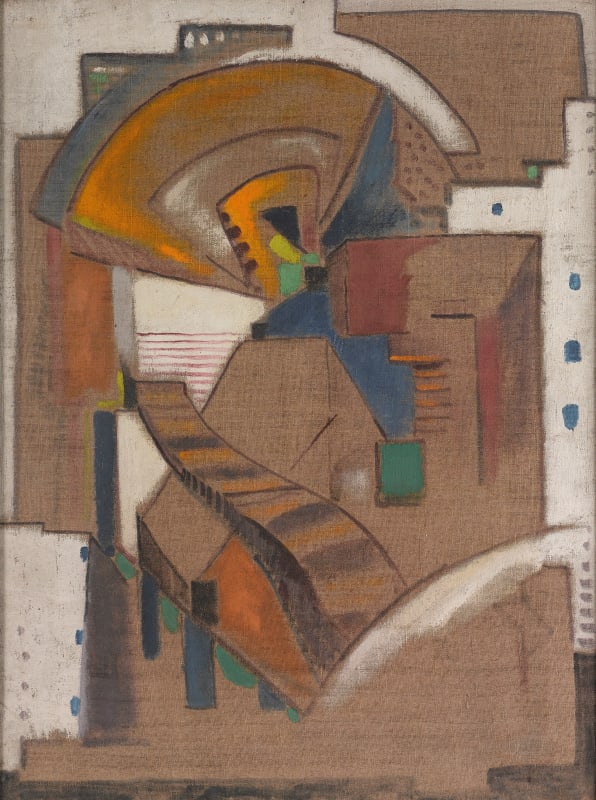Harry Phelan Gibb (1870 - 1948) is one of the great unsung heroes of British and European Modernism.
Gibb was born in 1870 in Alnwick, Northumberland. He studied in Newcastle, Edinburgh, Antwerp and Munich, before setting up his studio in Paris during that key period of artistic expression between the turn of the 20th Century and the Great War.
In Paris, Gibb moved in the same circle as Picasso, Matisse, Gris and perhaps most importantly the then mother figure of the avant-garde Gertrude Stein. Stein was a great supporter and friend to Gibb and even used him as a muse for her writing (one of the very earliest Portraits she did was about Gibb). Stein later wrote that she was convinced that the two painters of her generation that would be discovered after they were dead were Juan Gris and Gibb. She was certainly proved prophetic with Gris, and although Gibb has yet to take his place at the top table of the European avant-garde, his work and his story bear testament to a brave and remarkable modernist.
During his time in Paris, Gibb regularly exhibited at the renowned Salon D'Automne, becoming a Sociétaire in 1909. That very same year he also showed in New York and in London.
In 1910, the young Emily Carr, recently arrived in Europe, sought out Gibb as a teacher. His techniques and especially his use of colour had a lasting impact on her work. Armed with what she had learnt from Gibb she returned home in 1912 going on to become one of Canada's most loved and celebrated artists.
In 1913, Gibb's reputation was at its peak. He was one of the very few British artists invited to show at the epoch defining Armory Show in New York alongside Duchamp, Picasso, Matisse, Brancusi and many other leading members of the international avant garde. That same year he also had a one-man show at the celebrated Bernheim Jeune gallery in Paris, where it is recorded that nearly 1500 people attended the opening.
However, Gibb's fearless primitive style was not to everyone’s liking. In Dublin in 1914 a major show of his was closed down on the eve of opening due to the opposition of Catholic priests. All the pictures and numerous drawings were confiscated and not released until 1930.
Gibb moved back to England at the outset of war and like many artists during and after that horrific period his career suffered. Having fallen on hard times in the 1920s he was thankfully rediscovered in the 1930s by the brilliant dealer Lucy Wertheim. He went on to have a number of exhibitions in her London Gallery and she helped to support and reinvigorate his market. She later wrote in her biography that...
"The English artist still living whose work probably is of the most permanent value is Phelan Gibb. One day Phelan Gibb will doubtless come into his own, and his finest paintings take their place alongside examples of Manet, Cezanne, Picasso, … in international exhibitions of Modern Art"
For much of this period he based himself in Exmoor although he continued to seek inspiration whilst travelling around the UK, France and beyond. Gibb died in Great Hampden, Buckinghamshire, 25 October 1948.
His work is held in the Tate Gallery, the Towner Gallery and other British institutions as well as in the Auckland Art Gallery in New Zealand.
